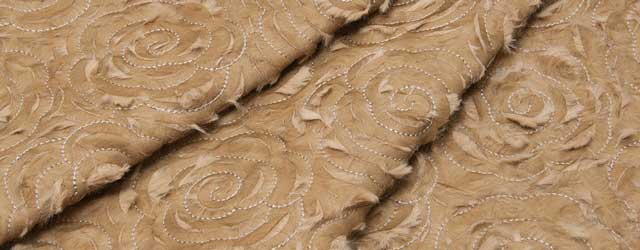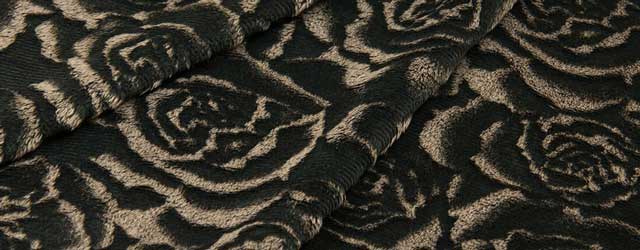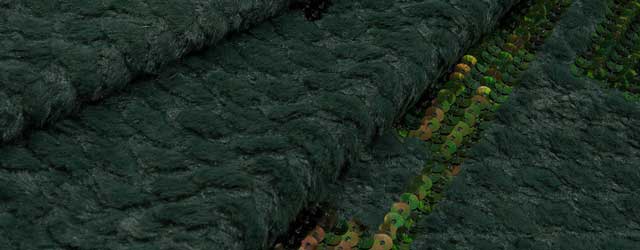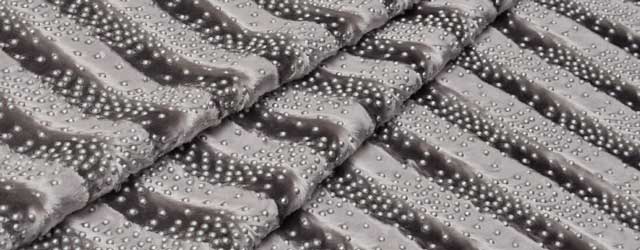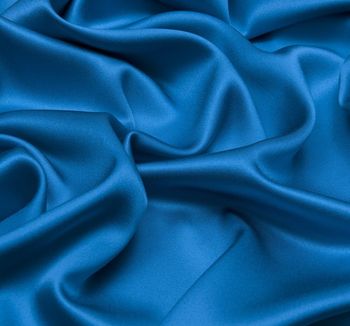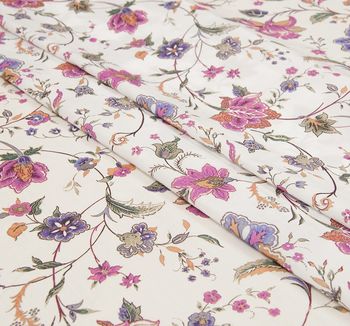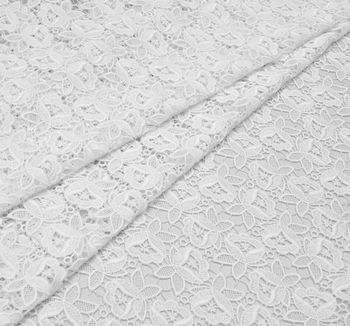Silk is a timelessly trendy natural fabric woven from the cocoons of silk worms. The world’s most famous fashion brands regularly apply it for various men’s and women’s outfits earning the admiration of the audience.
Faux Fur Fabric
Faux fur fabrics are also known as fake fur, mock fur and artificial fur. Unlike genuine fur obtained from animals such as mink, beaver, weasel, rabbit or fox, these fabrics are made of synthetic fibers and are 100% cruelty-free.
Tremendously popular, they are indispensable when it comes to chic and cozy outerwear. We’ve gathered some of the most popular questions regarding faux fur fabrics and tried to answer them as accurately as possible. Read on to find more!
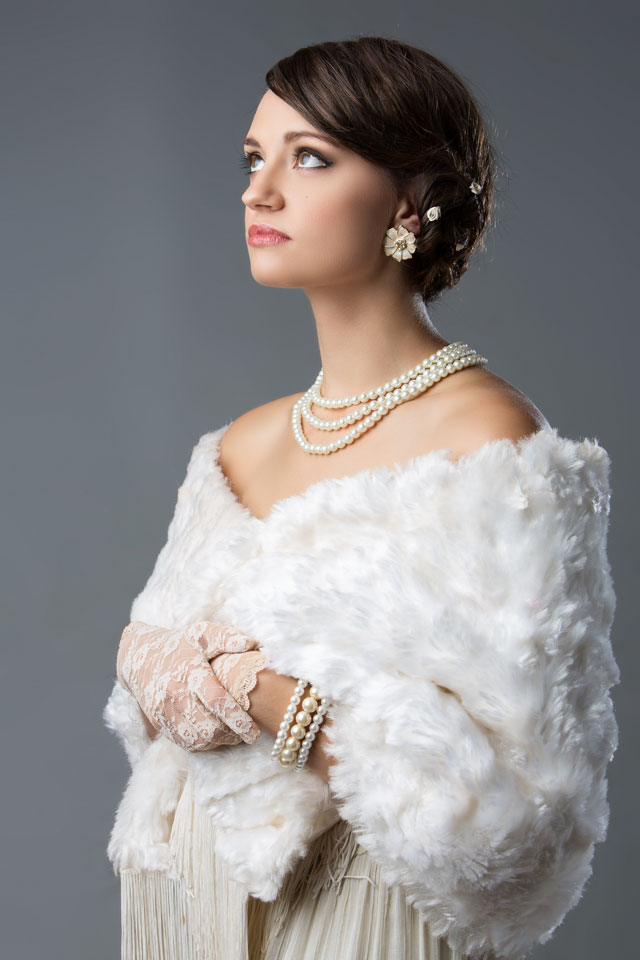
What Does Faux Fur Actually Mean?
Let's start with ethymology here. First, 'faux' [ˈfoʊ] is a French word that has been adapted into English to stand for something false, fake and innatural. Faux fur materials are pile textiles that simulate real animal fur. They come in a wide range of colors and textures. Quality faux fur fabrics look like their real matches (that’s why we also call them imitation fur!), and in some cases it’s really hard to tell the difference. Compared to animal fur, synthetic analogues are cheaper and not in short supply. Plus, they are more durable and resistant. The primary polymer used for faux fur is acrylics and modacrylics. The base fabric is often silk, wool or cotton.
Faux fur has been a hit among fashion designers. The importance of environmental care has stimulated the production of these imitation fabrics and made them popular all over the world, especially with vegans and people who support animal rights. The eco trend has evolved so greatly over the recent years, that many producers of real fur garments intentionally design them to look artificially.
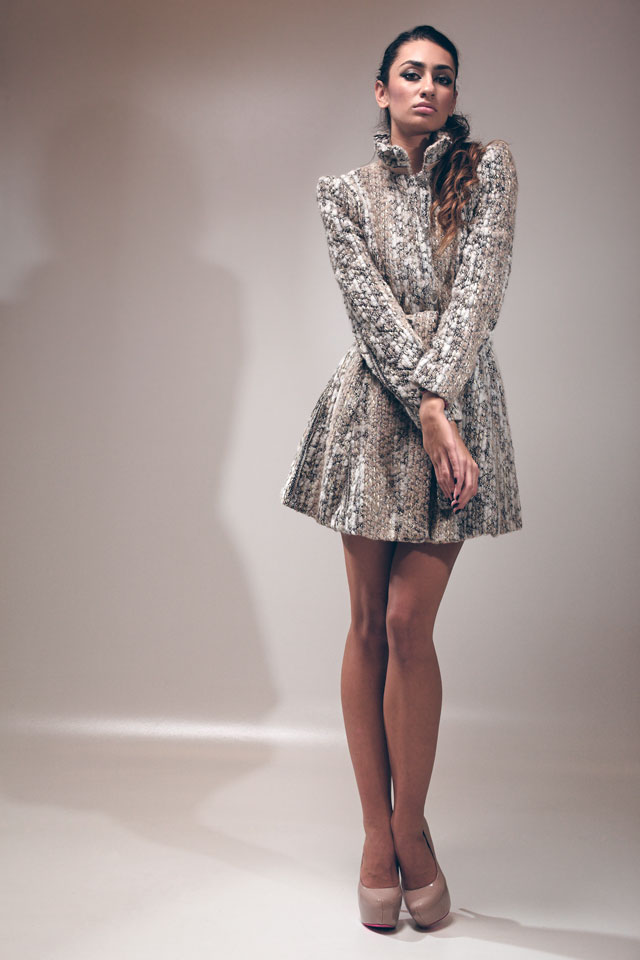
What Are the Main Types?
Since artificial fur is created to imitate “reality”, it can be divided into the types of animal fur it looks and feels like. Some of the most popular kinds are faux rabbit, faux fox, faux shearling, sheepskin and sherpa. Luxury faux fur fabrics include fake mink, chinchilla, sable, lynx, beaver, ermine, marten and leopard. If you’re up to something brand new, keep your eyes open for such offbeat types of faux fur as faux bear (fancy some grizzly?), wolf and husky.
Each fur fabric has a distinct pile which can vary in length and softness. It also has a distinct nap! It refers to the direction in which the pile is leaning, and it’s very important to follow the nap when cutting and sewing your faux fur. The range available on the market today includes:
- long pile faux fur,
- medium pile faux fur,
- short pile faux fur, also known as low pile.
These three kinds of fur fabrics are equally popular and come in a variety of classic and trendy shades, multicolor included.
What Does It Feel Like?
Remember, imitation fur is made of synthetic fibers. The way it feels to the touch depends a lot on the quality of fibers used for its production. Poor quality fur is either scratchy or itchy, it lacks luster and fades quickly when washed or even dry-cleaned.
Quality fur is quite a different story. It retains its shape and keeps the dye in place no matter how often you clean it. Plus, it’s silky smooth to the touch and uniform in color, unless it’s a speckled or mottled fur by design. Mind that fibers of different lengths look more authentic than the pile of the exact same length.
.jpg)
In terms of heat preserving, faux fur can successfully compete with natural wool, probably unless you live in the some of the most severe climatic zones, such as Siberia, Alaska, North Canada, as well as Antarctica and other extreme southern and northern world regions. Its warming mechanism is the same — the strands of fur are closely packed, which helps this fabric perfectly trap air and play the role of heat insulator.
How to Tell Faux Fur from Real Fur?
Faux fur is no longer a cheaper alternative to real fur that looks and feels like pure synthetics. Modern furs are actually so gorgeous one can easily mistake them for mink or beaver! Here are several tips on how to define what sort of fur is in your hands:
- If you want 100% imitation fur, check the base of the fabric. Just spread the fur with your fingers and see what’s inside: a fabric backing is what gives it away. If you see leather or animal skin, this is not the guilt-free material you’re looking for.
- Study the tips of the fibers. Synthetic ones are machine-cut and, hence, blunt, while real fur hairs are pointed.
- The burn test. If possible, cut out a few piles, put them onto an flame-proof item (e.g., a stone, ceramic plate or tile, or thick metal bar) and burn them up. Taste the smell and look at the ashes. If it reminds you of burnt hair, the fur is natural. If the odour is more of melted plastic or paper — the fur is either of acrylic or cotton, linen or rayon origin.
- Stick a pin into the ground. If it goes through easily — that's faux fur, as synthetic base has smooth fibres that are typically elastic enough to let the metal pin go in between them. However, if you have to push heavily onto the pin — the resistant material is leather, which is 100% sign of natural fur applied.
- Less reliable, yet still quite common feature of faux fur fabrics is their lighter weight.
What Are the 2018 Trends?
These animal-friendly materials are perfect for winter wardrobes. The range of garments and accessories one can make with a faux fur material is vast and expanding like the universe. Think about such fashion options as:
- faux fur jackets;
- fake fur coats;
- faux fur vests;
- stoles and shawls;
- faux fur collars;
- fake fur shoes and purses.
Choose any style that fits you: a cropped bomber jacket, a long shaggy coat, a knee-length trench coat, etc. Try various pile lengths and colors such as classic black and white, vibrant multicolor, or dappled fur.
.jpg)
The good news about faux fur is that it is not gender limited. In 2018, many leading fashion designers including Givenchy, Giorgio Armani, Giambattista Valli, Christian Dior and Nina Ricci offer fur outwear pieces both for men and women. Faux fur is also seen at Stella McCartney, Gucci, Michael Kors and, of course, Calvin Klein – the first fashion house who banned animal fur in their collections.
How to Look after Fake Fur and Where to Store It?
If you still wonder why synthetic fur is a great investment, hear this out: artificial fur does not attract moths and dust. It is durable and costs less than animal fur, so you don’t need to bother too much about care. Below are some of the proven ways to keep a faux fur coat or jacket in a brand new shape:
- Avoid wearing your favourite mock fur pieces in the rain.
- Spot clean occasional stains by hand using a water spray and a brush. Do not blow-dry your fur, let it dry naturally.
- Combing helps keep faux fur top-notch.
- Use dry-cleaner’s services. Though sometimes hand wash is possible, it is highly recommended that you turn to professionals to avoid any risk of damage.
- Store faux fur pieces in a closet on a hanger. Make sure the storage place is dry and cool.
Where to Buy This Fabric Online?
Tissura Online Shop is the ultimate destination for those who are planning to buy luxury faux fur fabrics. The range includes solid and printed faux furs by Jakob Schlaepfer, the innovative Swiss manufacturer renowned for its haute couture creations. Be sure to check the following designs:
Chiffon and organza bonded with faux fur — 1,005 US$ (815 €) per one running metre;
Rose printed fur to support the floral trend — 121 US$ (98 €) per one running metre;
Sequined faux fur with an exquisite hand for the ultimate fashion jacket — 837 US$ (679 €) per one running metre;
Silky soft faux fur with a two-tone effect adorned with metal rivets — 1,405 US$ (1,140 €) per one running metre.
How to stay cool on a hot summer day? Wear fabrics built for the heat. Cotton, linen, viscose, silk – there are dozens of summer-friendly materials you can choose for your wardrobe. The best fabric to opt for when the temperature rises should be breathable and comfortable.
The wedding dress is one of the most important clothing items a woman gets to choose in her lifetime. It can be made of silk or cotton, lace or tulle, be strewn with sequins or embroidered with beads.
